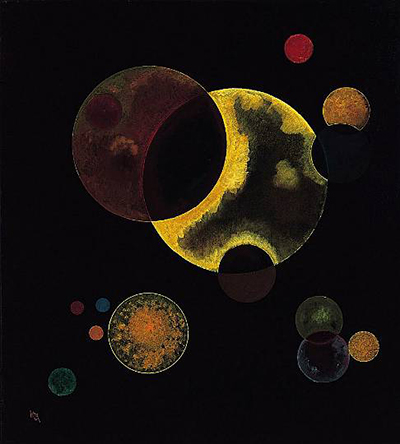Heavy Circles is an abstract painting from Wassily Kandinsky in 1927. By this point of his career he had switched to a truly modern form of art, where simple shapes and lines would create all forms.
There is a theme of cosmology to be found here which will remind many of the work of Catalan painter, Joan Miro. He would use similar myriads of circles and lines to recreate the beautiful night sky and its series of constellations. In this piece it is specifically the overlapping circles used by Kandinsky that remind us most of the planets and their constant movement. Two main circles dominate the centre of the composition, whilst further series of small circles are then found elsewhere in the corners of the composition. The night sky has long since interested humanity, long before we became able to travel around it. There has always been a magical atmosphere to the nature and beauty of the universe.
This small painting can be found in the collection of the Norton Simon Museum in Pasadena, California, US. It is just over 50cm tall and wide, almost entirely square in its ratio. A letter from the artist to historian Will Grohman just a few years later would explain a little more about the artist's thinking when he put this specific painting together. He explained the network of circles as follows, which broadly backs up our own assumptions.
"...It is a link with the cosmic and I use it above all formally... The circle is the synthesis of the greatest oppositions. It combines the concentric with the ex-centric in a single form and in balance..."
Visitors to this fine gallery will also be able to look through a huge collection of artefacts which was put together in a relatively short space of time, though clearly at a great expense. Some of the other notable artists featured here include Rembrandt, Fragonard, Goya, Degas, Vuillard and Picasso. They actually have over 12,000 items in total, though only a small fraction can ever be on display at any one time.




